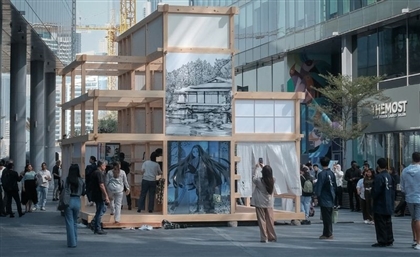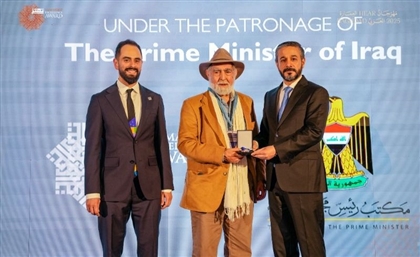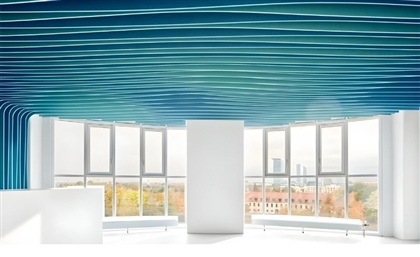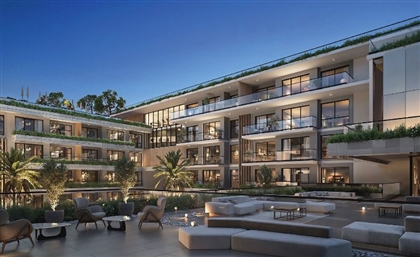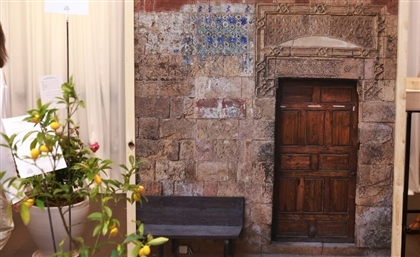AlMusalla Pavilion Travels From Saudi Arabia to Uzbekistan
EAST Architecture Studio’s modular AlMusalla Pavilion journeys from Saudi Arabia to Uzbekistan for Bukhara Biennial 2025.
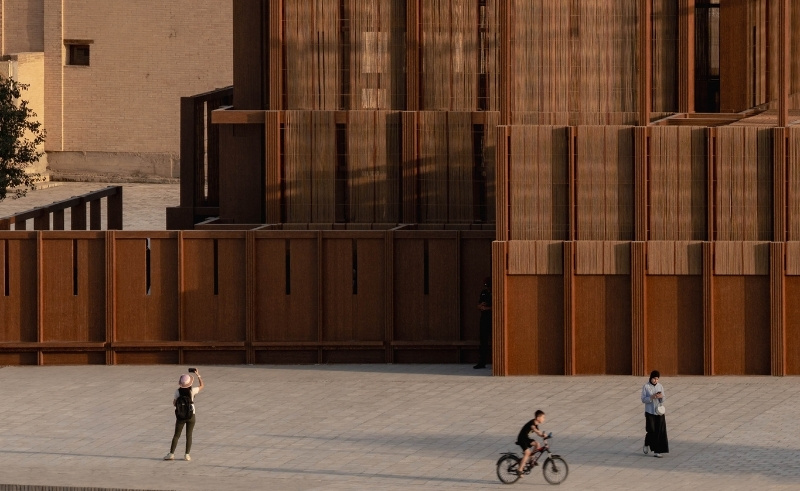
In the soft geometry of woven palm fronds, a dialogue unfolds between permanence and impermanence, between ritual and reassembly. The AlMusalla Pavilion, designed by EAST Architecture Studio with artist Rayyane Tabet and engineers AKT II, was first conceived for the Islamic Arts Biennale in Jeddah and now stands reinstalled in Bukhara, Uzbekistan, as part of the inaugural Bukhara Biennale 2025. Its journey from the Red Sea to Central Asia extends its architectural and spiritual resonance across geographies once linked by the Silk Road.
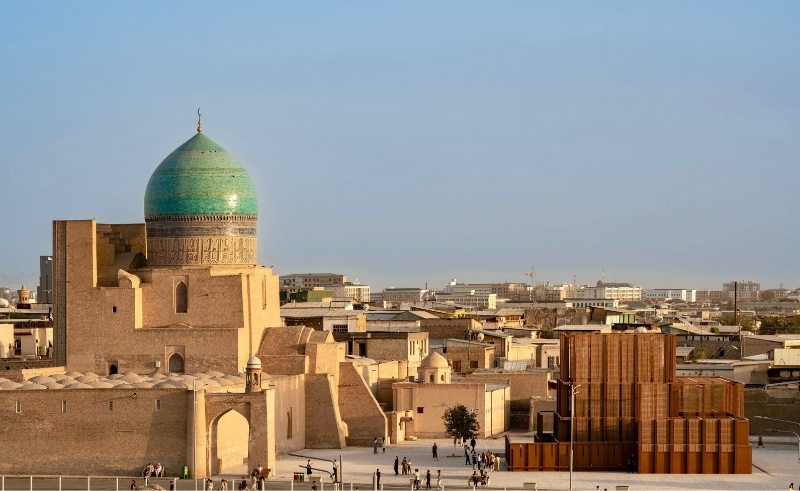 Created as the winning proposal for the inaugural AlMusalla Prize, the pavilion reimagines future spaces of worship as adaptable, modular, and inclusive. Installed beneath the vast canopies of Jeddah’s Western Hajj Terminal, the structure was built almost entirely from local date palm waste, reclaiming a by-product of the Saudi landscape and transforming it into a material of spiritual and architectural significance. As EAST Architecture Studio describes it, the musalla “reconciles the historic and contemporary, giving new life to the ancient architectural traditions of Islamic prayer.”
Created as the winning proposal for the inaugural AlMusalla Prize, the pavilion reimagines future spaces of worship as adaptable, modular, and inclusive. Installed beneath the vast canopies of Jeddah’s Western Hajj Terminal, the structure was built almost entirely from local date palm waste, reclaiming a by-product of the Saudi landscape and transforming it into a material of spiritual and architectural significance. As EAST Architecture Studio describes it, the musalla “reconciles the historic and contemporary, giving new life to the ancient architectural traditions of Islamic prayer.”
-aa59dce6-5305-4f65-bdde-f3d70689bfe4.jpg) Prefabricated panels of palm fibre and fronds are mounted on a lightweight steel subframe, forming a system that is both durable and transportable. The woven composition draws from the region’s ancient textile-making traditions, translating the loom into a spatial and structural concept. An open courtyard anchors the layout, echoing the typologies of Islamic architecture where prayer and community coexist. Around it, semi-enclosed spaces filter light through woven facades that breathe and diffuse the sun into a soft, shifting pattern.
Prefabricated panels of palm fibre and fronds are mounted on a lightweight steel subframe, forming a system that is both durable and transportable. The woven composition draws from the region’s ancient textile-making traditions, translating the loom into a spatial and structural concept. An open courtyard anchors the layout, echoing the typologies of Islamic architecture where prayer and community coexist. Around it, semi-enclosed spaces filter light through woven facades that breathe and diffuse the sun into a soft, shifting pattern.
-92741613-e1dd-49ac-a48b-d6fe3de3dc60.jpg) The use of palm waste speaks to a broader environmental and cultural logic. Once discarded, the palm becomes a renewable resource, embodying a cycle of reuse that mirrors the ecological rhythms of the desert. Its fibrous texture and natural porosity lend warmth and lightness, crafting an atmosphere that feels both handmade and precise. The pavilion becomes a study in material intelligence, where sustainability continues the lineage of local craft.
The use of palm waste speaks to a broader environmental and cultural logic. Once discarded, the palm becomes a renewable resource, embodying a cycle of reuse that mirrors the ecological rhythms of the desert. Its fibrous texture and natural porosity lend warmth and lightness, crafting an atmosphere that feels both handmade and precise. The pavilion becomes a study in material intelligence, where sustainability continues the lineage of local craft.
-49def5a6-032e-4d25-bd2c-2623019479b3.jpg) When AlMusalla was reassembled in Bukhara in September 2025, its modular logic took on new meaning. What began as a construction strategy became a meditation on movement itself. Each relocation reframes the pavilion within a different landscape, adapting to new soils and skies while retaining its essence. In Bukhara, a city once at the crossroads of the Silk Road, the pavilion stands amid layers of history, its woven surfaces resonating with an architectural language shaped by brick, tile, and textile. As noted by EAST Architecture Studio, “This arrival feels like a return to a place where cultures, ideas, and prayers have always intersected.”
When AlMusalla was reassembled in Bukhara in September 2025, its modular logic took on new meaning. What began as a construction strategy became a meditation on movement itself. Each relocation reframes the pavilion within a different landscape, adapting to new soils and skies while retaining its essence. In Bukhara, a city once at the crossroads of the Silk Road, the pavilion stands amid layers of history, its woven surfaces resonating with an architectural language shaped by brick, tile, and textile. As noted by EAST Architecture Studio, “This arrival feels like a return to a place where cultures, ideas, and prayers have always intersected.”
Photography credits: Sara Saad, Courtesy of the Diriyah Biennale Foundation




